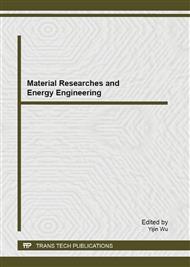p.57
p.62
p.68
p.72
p.77
p.83
p.89
p.94
p.98
Finite Element Analysis of Fretting Wear for Nuclear Inconel 690 Alloy
Abstract:
Finite element method to analyze the fretting wear characteristics based on Hertz theory, Coulomb friction law and a modified Archard wear equation, has been applied to a cylinder-on-flat configuration for typical steam generator tube material Inconel 690 alloy and typical anti-vibration bar material Inconel 600 alloy (Cr plating) in the nuclear power plant, under gross slip and partial slip conditions. The evolutions of contact profile, surface contact variables with increase in wear cycles are predicted. The slip regime is predicted to have significant effects on the fretting wear behavior. Under the gross slip regime, it is found that the peak contact pressure occurs at the center of the contact scar, and the actual relative slip is slightly smaller than the applied value. The contact width increases, and the peak pressure decreases gradually with increase in wear cycles. Whereas under the partial slip regime, the peak contact pressure occurs at the stick-slip boundary, the actual relative slip is much smaller than the applied value, and no relative slip occurs in the stick zone. The contact width increases gradually, and the peak pressure increases rapidly with increase in wear cycles.
Info:
Periodical:
Pages:
77-82
Citation:
Online since:
September 2013
Authors:
Keywords:
Price:
Сopyright:
© 2013 Trans Tech Publications Ltd. All Rights Reserved
Share:
Citation:


